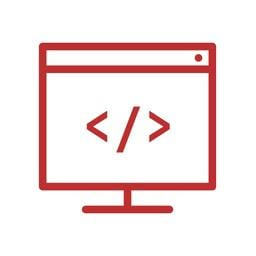A Developer’s Roadmap to Creating Dynamic, Secure, and User-Friendly PHP Applications
A Developer’s Roadmap to Creating Dynamic, Secure, and User-Friendly PHP Applications
PHP has stood the test of time as one of the most versatile and widely used server-side scripting languages. From powering small-scale websites to robust enterprise applications, PHP is a cornerstone of web development. However, creating dynamic, secure, and user-friendly applications in PHP requires a strategic approach. This roadmap offers a step-by-step guide for developers to craft exceptional applications that cater to modern standards.
1. Establish a Solid Development Environment
Your journey begins with setting up a reliable environment:
- PHP Latest Version: Stay updated with the latest PHP version for enhanced features and security improvements.
- Code Editor or IDE: Tools like PhpStorm, Visual Studio Code, or Sublime Text can significantly boost productivity.
- Local Server Tools: XAMPP, WAMP, or Docker offer robust local server environments.
- Version Control: Git is indispensable for managing code changes and collaborating with teams.
2. Learn the Fundamentals of PHP
Understanding the core language features is vital:
- Familiarize yourself with PHP syntax, loops, arrays, and control structures.
- Explore superglobals like
$_GET,$_POST, and$_SESSIONfor handling user input and sessions. - Dive into PHP’s interaction with HTML and CSS to build dynamic web pages.
3. Implement Database Management
Data storage and retrieval are central to dynamic applications:
- Use relational databases like MySQL or PostgreSQL.
- Leverage PDO (PHP Data Objects) for secure and flexible database access.
- Learn about ORM (Object-Relational Mapping) tools like Eloquent for simplifying database interactions.
4. Focus on Application Security
Security should never be an afterthought:
- Input Validation and Escaping: Prevent SQL injection and XSS by sanitizing user inputs.
- Password Hashing: Use
password_hash()andpassword_verify()to secure user credentials. - Implement HTTPS: Encrypt data transmission using SSL/TLS certificates.
- Error Handling: Avoid exposing sensitive details by properly configuring error logs.
5. Adopt a Framework for Efficiency
Frameworks streamline development with built-in tools and best practices:
- Laravel: Known for elegance and simplicity, it’s great for rapid development.
- Symfony: A powerful framework for complex, large-scale projects.
- CodeIgniter: Lightweight and perfect for smaller applications.
- Frameworks often include routing, authentication, and database tools that speed up development.
6. Create User-Friendly Interfaces
The user experience (UX) is critical to application success:
- Responsive Design: Use CSS frameworks like Bootstrap to ensure mobile and desktop compatibility.
- AJAX: Implement asynchronous page updates for smoother interactions.
- Form Validation: Combine client-side (JavaScript) and server-side (PHP) validation to enhance reliability.
- API Integration: Connect your application to external services through RESTful APIs.
7. Optimize Performance
Efficient applications offer a better user experience:
- Caching: Use tools like Memcached or Redis to reduce server load.
- Code Efficiency: Minify and compress assets to improve load times.
- Database Tuning: Optimize queries and use indexing to enhance performance.
- CDNs: Speed up content delivery with a content delivery network.
8. Thorough Testing and Debugging
Rigorous testing ensures application reliability:
- Unit Testing: Test individual components with tools like PHPUnit.
- Integration Testing: Verify that modules work seamlessly together.
- Error Monitoring: Regularly review logs and fix errors proactively.
- Debugging Tools: Use Xdebug or IDE-integrated debugging features for efficiency.
9. Deploy and Maintain the Application
Deployment is not the end; it’s a step toward continuous improvement:
- Automated Pipelines: Use CI/CD tools like Jenkins or GitHub Actions for seamless deployments.
- Monitoring Tools: Implement solutions like New Relic to monitor performance and uptime.
- Regular Updates: Keep dependencies and libraries updated to minimize vulnerabilities.
10. Stay Ahead with Continuous Learning
Web development evolves rapidly. Stay updated by:
- Reading official documentation and online tutorials.
- Engaging with the PHP community through forums and events.
- Exploring new trends such as headless CMS, serverless architectures, and GraphQL APIs.
Conclusion
Crafting dynamic, secure, and user-friendly PHP applications requires both technical expertise and a commitment to best practices. By following this roadmap, developers can build high-quality applications that meet modern user expectations and stand the test of time. Embrace the journey of continuous learning and innovation to stay ahead in the world of PHP development.
Scribd - Your Guide to Growing Online Insights from a Leading Website Design and Development Agency
Slideserve - Your Guide to Growing Online Insights from a Leading Website Design and Development Agency
Easyupload - Your Guide to Growing Online Insights from a Leading Website Design and Development Agency
Btafile - Your Guide to Growing Online Insights from a Leading Website Design and Development Agency
Dz4up - Your Guide to Growing Online Insights from a Leading Website Design and Development Agency
Mediafire - Your Guide to Growing Online Insights from a Leading Website Design and Development Agency
Dosya - Your Guide to Growing Online Insights from a Leading Website Design and Development Agency
4shared - Your Guide to Growing Online Insights from a Leading Website Design and Development Agency
Depositfiles - Your Guide to Growing Online Insights from a Leading Website Design and Development Agency
Filefactory - Your Guide to Growing Online Insights from a Leading Website Design and Development Agency
Files.fm - Your Guide to Growing Online Insights from a Leading Website Design and Development Agency
Docs Google - Your Guide to Growing Online Insights from a Leading Website Design and Development Agency




Comments
Post a Comment